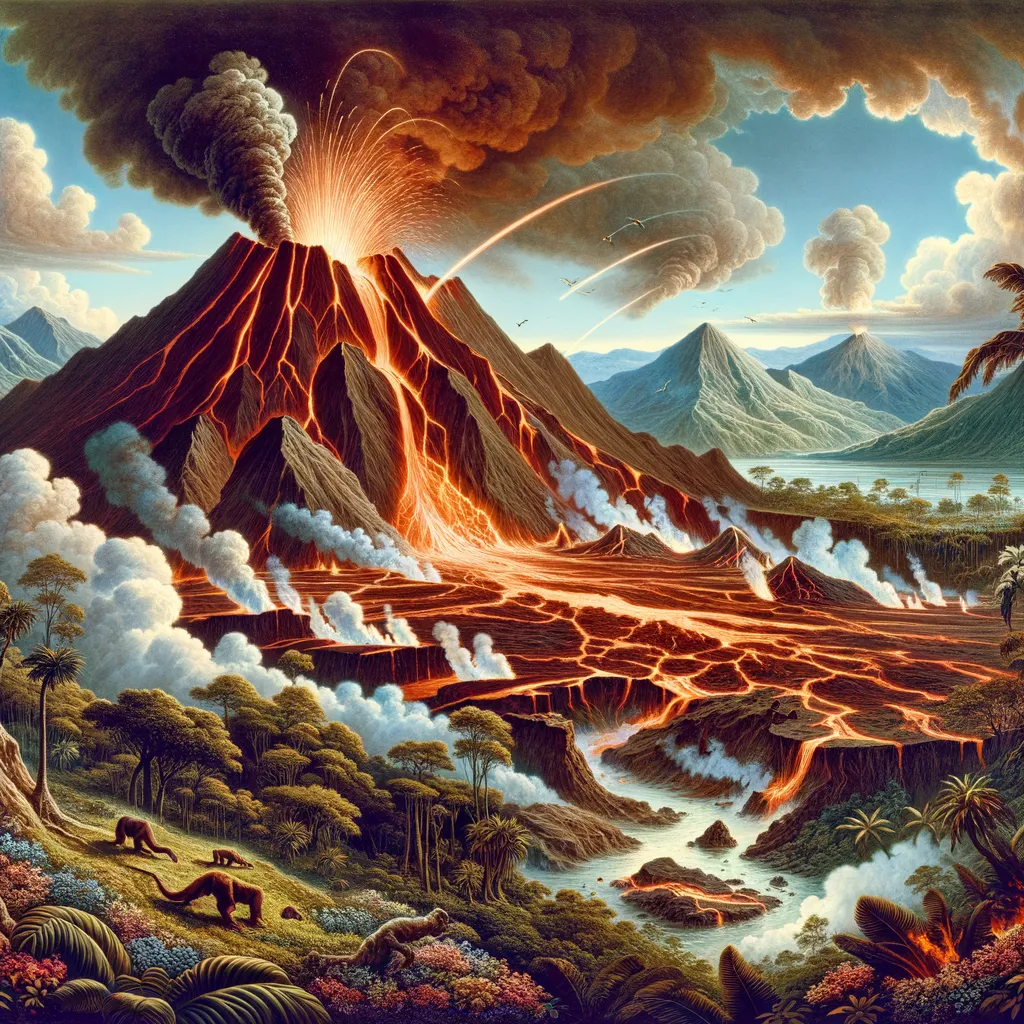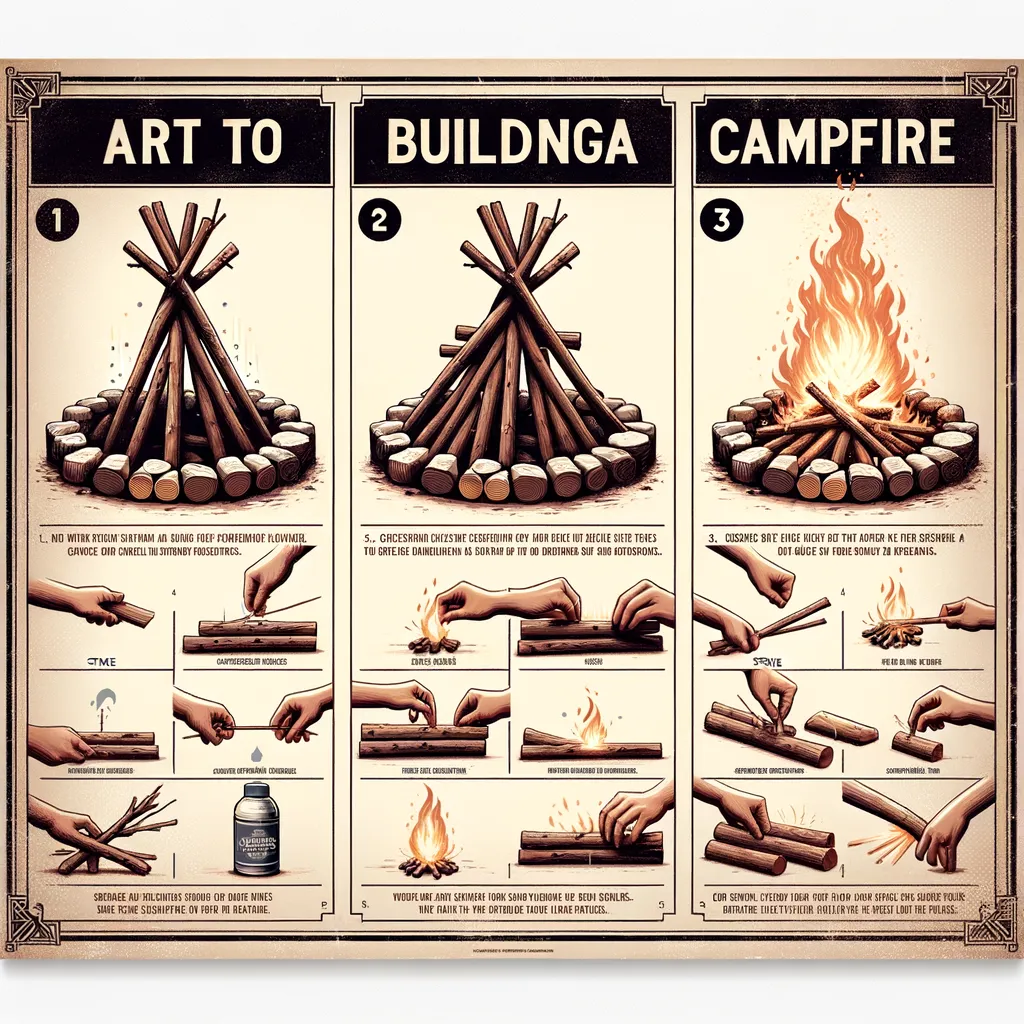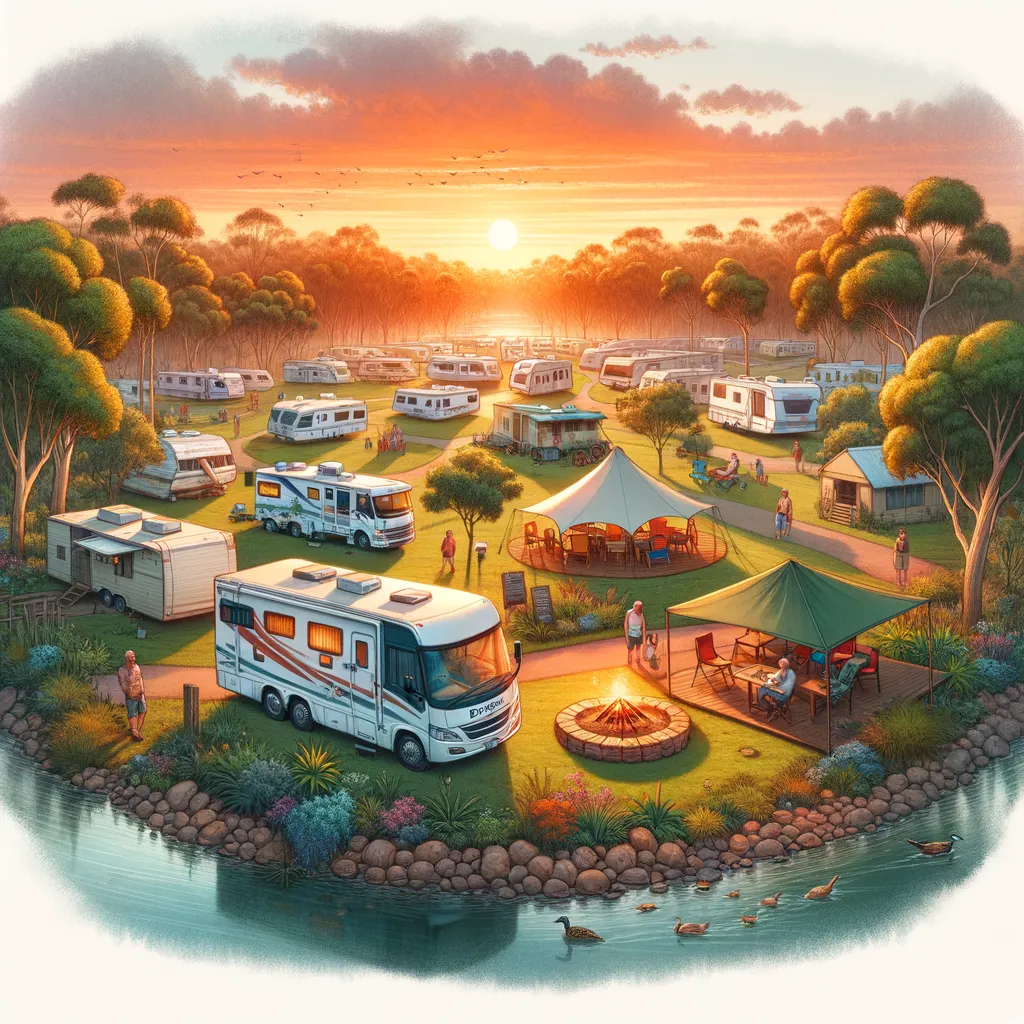html
Welcome to our captivating guide on Historical Volcano Eruptions and Their Effects on the Environment. As we embark on this fascinating journey through time, we’ll uncover the monumental eruptions that have sculpted Earth’s surface, influenced climate patterns, and reshaped human history.
For outdoor enthusiasts and history buffs alike, understanding the force of nature and its influence on the environment is not just thrilling but also offers a unique perspective on Earth’s dynamic landscape. Whether you’re planning your next adventure or simply wish to expand your knowledge, exploring the impact of these natural phenomena is undoubtedly enriching. And if your adventures lead you outdoors, consider enhancing your experience by checking out the best gear at Camping and gathering more Camping info to prepare for your explorations.
Why Study Historical Volcanic Eruptions?
Studying historical volcanic eruptions offers us invaluable insights into the power of nature and its capacity to both create and destroy. By examining the past, we learn not just about the geological impact of these eruptions but also about their profound effects on climate, biodiversity, and even human civilizations. This knowledge is crucial for preparing for future volcanic events and understanding our planet’s intricate environmental systems.
The Impact of Volcanic Eruptions on the Environment
Volcanic eruptions are among the most powerful events on Earth, capable of causing catastrophic damage to the surrounding environment. They release vast amounts of ash, gases, and lava, which can lead to climate changes, affect air quality, and disrupt ecosystems. In the short term, eruptions can devastate landscapes and lead to loss of life and property. In the long term, they can also enrich soils and create new landforms, demonstrating nature’s resilience and its ability to recover from disaster.
A Closer Look at Some Historical Eruptions
Through the lens of history, we see how volcanic eruptions have shaped the Earth and left indelible marks on human memory. From the catastrophic eruption of Mount Vesuvius in AD 79 that buried the cities of Pompeii and Herculaneum, to the explosive eruption of Mount Tambora in 1815 that led to the “Year Without a Summer,” these events have had lasting effects on the planet’s climate and human societies.
Another significant eruption occurred in 1883 when Krakatoa, located in Indonesia, erupted so violently that it was heard thousands of miles away. The aftermath affected global weather patterns and led to spectacular sunsets worldwide, inspiring artists and writers of the time.
The 20th century witnessed the eruption of Mount St. Helens in 1980, which provided invaluable data for volcanic research and led to advances in our understanding of these majestic yet formidable natural phenomena.
Each of these historical eruptions tells a unique story of destruction and renewal, offering lessons on the importance of preparedness and respect for nature’s power.
As we delve further into the most impactful volcanic eruptions in history, we will explore their causes, the immediate aftermath, and the long-term environmental effects. Stay tuned as we continue our exploration of these monumental natural events and their lasting impact on our planet.
Welcome to our enlightening guide on Historical Volcano Eruptions and Their Effects on the Environment, specially tailored for parents. As guardians of the curious and imaginative young minds, it’s crucial to arm yourself with knowledge and preparedness against the awe-inspiring power of nature’s volcanoes. This guide aims to equip you with essential insights into volcanic eruptions, their impacts on the environment, and practical tips to ensure your family’s safety and well-being.
Volcanic eruptions are pivotal events that have sculpted the Earth’s landscape, affected global climates, and altered the course of human history. For parents, instilling a sense of respect and understanding for nature’s forces in your children can be both educational and life-saving. Moreover, exploring these natural phenomena can be a thrilling adventure for the whole family, fostering a love for science and the great outdoors. Equip yourself with the right camping gear and gather more camping information to turn this learning opportunity into an unforgettable family experience.
Five Things Parents Should Know in Preparing for Historical Volcano Eruptions
Understanding and preparing for the potential threats posed by volcanic eruptions is essential for ensuring your family’s safety. Here are five crucial aspects parents should be aware of:
- The Basics of Volcanoes: Educate your family about what volcanoes are, why they erupt, and the different types of eruptions. A well-informed family is better prepared to understand warnings and instructions in the event of an eruption.
- Emergency Preparedness: Develop and regularly update an emergency plan. This includes having an emergency kit ready, knowing evacuation routes, and understanding the local siren system or alert protocols. Familiarize yourself with the local emergency services and community plans regarding volcanic eruptions.
- Health and Safety Measures: Volcanic ash can be harmful to health, causing respiratory issues, eye problems, and skin irritation. Educate your family on the importance of wearing masks, using eye protection, and other safety measures in the event of ashfall. Keeping indoor air clean and avoiding outdoor activities during ashfall are crucial steps to protect your family’s health.
- Environmental Impact Awareness: Teach your children about the environmental impacts of volcanic eruptions, such as changes in climate, effects on wildlife, and air quality issues. This knowledge not only prepares them for the immediate effects of an eruption but also instills a deeper respect for nature and the interconnectedness of Earth’s systems.
- Community Engagement: Participate in community preparedness programs and encourage your children to engage in educational activities related to volcanoes and natural disaster preparedness. Building a sense of community and shared responsibility can be incredibly empowering and reassuring during natural disasters.
In examining historical eruptions like the devastating explosion of Mount Tambora or the awe-inspiring eruption of Krakatoa, parents and children alike can learn valuable lessons about resilience, preparation, and the incredible power of nature. By understanding the past, we can better prepare for the future, ensuring that our families not only survive but also thrive in the face of natural challenges.
As we continue to explore the monumental volcanic eruitions in history, their causes, and long-term environmental effects, it becomes evident that knowledge and preparedness are our best tools. Embracing these can transform uncertain fear into confident readiness, enabling families to face natural events with courage and wisdom. So, let’s equip ourselves with the understanding and skills needed to navigate the dynamic landscape of our planet, making safety and education our top priorities in the breathtaking journey of discovery through the world of volcanoes.
Understanding historical volcanic eruptions and their impacts on our environment not only enriches our knowledge but also empowers us as individuals and communities to face future challenges with preparedness and confidence. Let this guide be a stepping stone for parents and children alike to explore, learn, and prepare for the dynamic forces of nature that shape our world.
Disclaimer
The articles available via our website provide general information only and we strongly urge readers to exercise caution and conduct their own thorough research and fact-checking. The information presented should not be taken as absolute truth, and, to the maximum extent permitted by law, we will not be held liable for any inaccuracies or errors in the content. It is essential for individuals to independently verify and validate the information before making any decisions or taking any actions based on the articles.





